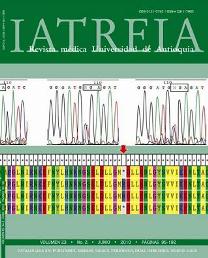High ultraviolet index (UVI) in two cities of Antioquia (Colombia)
DOI:
https://doi.org/10.17533/udea.iatreia.11125Abstract
Background: The incidence of skin cancer has risen in the last two decades worldwide. Cumulative and long-term solar ultraviolet (UV) exposure is one of the most important risk factors for melanoma, non-melanoma skin cancer and cataracts. The UV Index (UVI) has been designed to educate the general population regarding sun exposure and the risk for skin cancer.
Objective: To quantify the UVI in two different cities in the province of Antioquia (Colombia).
Results: High UVI´s (Mean: 10) were found in the northeast region of Antioquia as well as in its capital, Medellin city.
Discussion and conclusions: This particular population appeared to be exposed to high levels of UV Radiation (UVR) all year round. The use of the UVI may be a useful educative tool for the community in regards to the health risks of overexposure to UVR.
Downloads
Downloads
Published
How to Cite
Issue
Section
License
Papers published in the journal are available for use under the Creative Commons license, specifically Attribution-NonCommercial-ShareAlike 4.0 International.
The papers must be unpublished and sent exclusively to the Journal Iatreia; the author uploading the contribution is required to submit two fully completed formats: article submission and authorship responsibility.














